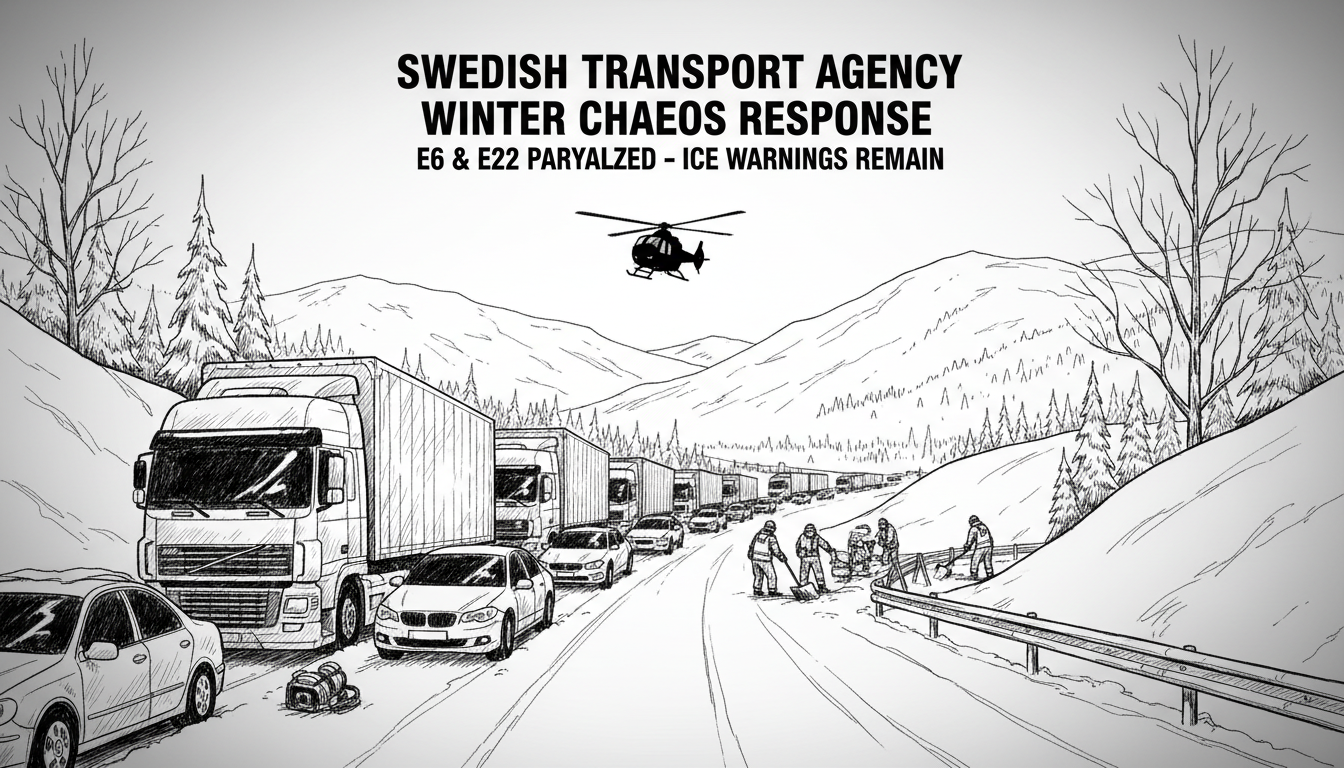Southern Sweden's highways are slowly returning to normal after a night of winter chaos. The Swedish Transport Agency confirms all available resources are now deployed across the road network. Traffic began flowing properly again on Friday morning following widespread disruptions.
Sara Lindström, press communicator at the Transport Agency, stated their teams are working intensively. "All our resources are out conducting anti-skid treatments to handle morning traffic," she explained. The agency prioritized major highways first after Thursday's severe conditions.
During Thursday and early Friday, drivers faced hours-long standstills on critical routes. The E6 and E22 highways experienced queues stretching for kilometers. Multiple vehicles became stranded in what officials described as one of the season's most challenging weather events.
Road conditions remain concerning in several regions. Transport Agency maps show red-marked roads around Helsingborg in Skåne, indicating high ice risk. Areas near Växjö and along the Västervik coastline also carry red warnings. These markings signal particularly dangerous driving conditions requiring extreme caution.
The agency's morning reports continue warning about slippery roads and snowdrifts. Many secondary routes remain hazardous despite improvements on main arteries. Officials emphasize that black ice represents the greatest current threat to morning commuters.
Sweden's winter preparedness system faces its annual test during these events. The country invests heavily in winter maintenance, yet extreme weather still overwhelms resources. This reflects the broader challenge Nordic countries face with increasingly volatile winter conditions.
International readers should understand Sweden's transport infrastructure is generally highly reliable. However, rapid weather changes can create temporary chaos even in well-prepared nations. The country's extensive road network requires coordinated efforts across multiple municipalities.
Transport Agency officials will hold a press conference at 11:00 Friday to address recent traffic conditions. This briefing will likely outline lessons learned and future preparedness measures. Such events typically generate political discussion about winter maintenance funding and resource allocation.
The situation demonstrates how weather extremes test even robust infrastructure systems. While Sweden handles winter conditions better than most countries, perfect preparedness remains impossible. Travelers should always check road conditions and consider postponing non-essential trips during severe weather warnings.

